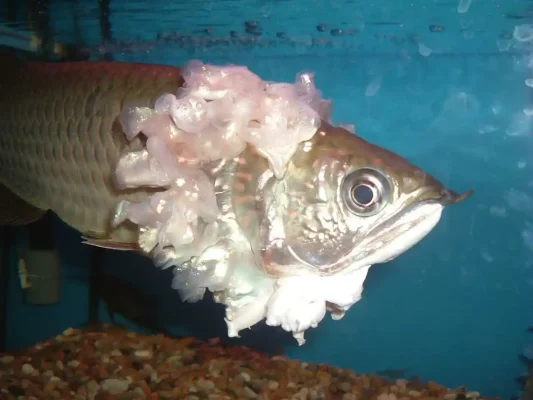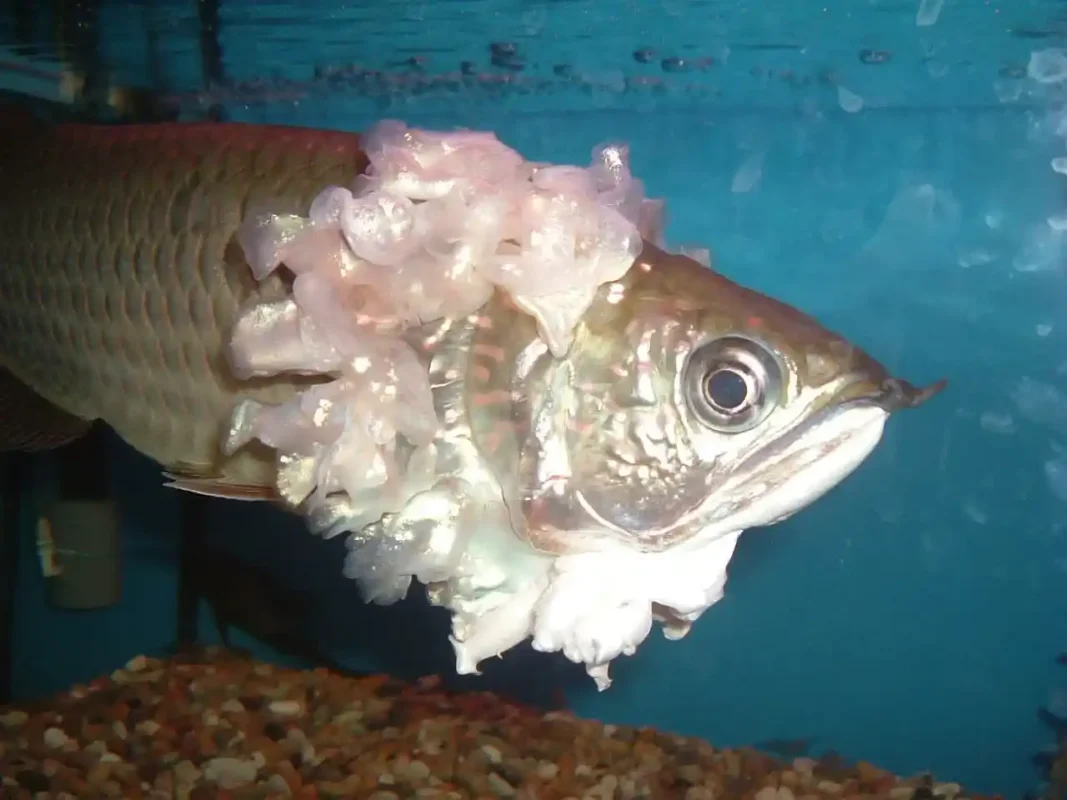Unlock the Secrets to Perfect Arowana Health: A Comprehensive Guide
Arowana Health and Diseases: A Comprehensive Guide
Arowanas are majestic fish that require dedicated care to stay healthy. In this guide, we’ll cover common arowana health and diseases, their symptoms, causes, and treatments. This information will help you maintain a healthy environment for your Arowana.
Understanding Arowana Health
Taking care of an Arowana isn’t just about feeding it and changing the water now and then. It’s about creating an environment where it can flourish. Here’s what you need to know.
Ideal Tank Conditions
- Water Quality: Arowanas need pristine water conditions. Regularly test for ammonia, nitrites, and nitrates.
- Temperature: Keep the tank between 75-82°F (24-28°C).
- pH Levels: Maintain a pH level between 6.5 and 7.5.
Proper Diet
- Nutritional Needs: Arowana is carnivorous. Feed them a varied diet of insects, small fish, and specially formulated pellets.
- Feeding Practices: Don’t overfeed. Two to three times a week is often enough for adult Arowanas.
Regular Monitoring
- Routine Check-Ups: Regularly observe your Arowana for any signs of stress or illness. Check for changes in behavior, appetite, and appearance.
Common Arowana Diseases
Even with the best care, Arowanas can still get sick. Understanding common Arowana health diseases helps in early detection and treatment.

Ichthyophthirius (Ich)
- Symptoms: White spots on the body and gills, scratching against objects.
- Causes: Poor water quality and sudden temperature changes.
- Treatments: Increase tank temperature gradually to 86°F (30°C) and use Ich treatment solutions.
Dropsy
- Symptoms: Swollen body, pinecone-like scale protrusion.
- Causes: Bacterial infections are often due to poor water quality.
- Treatments: Isolate the fish, improve water conditions, and use antibacterial medications.
Fin Rot
- Symptoms: Frayed or discolored fins, often with a white edge.
- Causes: Bacterial infections, often triggered by stress or injury.
- Treatments: Clean the tank, remove decaying matter, and treat with antibacterial medications.
Mouth Fungus
- Symptoms: Cotton-like growth around the mouth.
- Causes: Fungal infections due to poor water conditions or injuries.
- Treatments: Isolate the affected fish and treat it with antifungal medications.
Swim Bladder Disease
- Symptoms: Difficulty swimming, floating to the top, or sinking to the bottom.
- Causes: Overfeeding, poor diet, or infections.
- Treatments: Fast the fish for a few days, then feed peas or specialized swim bladder treatment food.
Prevention and Maintenance
Prevention is better than cure. Implementing proper maintenance routines can save your Arowana from many health issues.
Quarantine Practices
Importance: Always quarantine new fish before introducing them to the main tank to prevent the spread of Dropsy
Treatments: Isolate the fish, improve water conditions, and use antibacterial medications. Antibiotics like Kanamycin can be effective, but early intervention is crucial.
Fin Rot
- Symptoms: Frayed or discolored fins, often with a white edge.
- Causes: Bacterial infections, often triggered by stress or injury.
- Treatments: Clean the tank, remove decaying matter, and treat with antibacterial medications. Ensure the water quality is pristine and consider adding aquarium salt to the water.
Mouth Fungus
- Symptoms: Cotton-like growth around the mouth.
- Causes: Fungal infections due to poor water conditions or injuries.
- Treatments: Isolate the affected fish and treat them with antifungal medications like Meth Blue or Pimafix. Also, improve the tank’s water quality to prevent recurrence.
Swim Bladder Disease
- Symptoms: Difficulty swimming, floating to the top, or sinking to the bottom.
- Causes: Overfeeding, poor diet, or infections.
- Treatments: Fast the fish for a few days, then feed peas or specialized swim bladder treatment food. Ensure a balanced diet and avoid overfeeding in the future.
Prevention and Maintenance
Prevention is better than cure. Implementing proper maintenance routines can save your Arowana from many health issues.
Quarantine Practices
- Importance: Always quarantine new fish before introducing them to the main tank to prevent the spread of diseases.
- Duration: Quarantine for at least 2-4 weeks. Use a separate tank and monitor the new fish closely.
Regular Tank Cleaning
- Effective Cleaning Tips: Regularly change 20-30% of the tank water, clean filters, and remove uneaten food.
- Schedule: Set a weekly cleaning routine to keep the tank environment stable. Avoid using harsh chemicals that could harm your Arowana.
Balanced Diet
- Nutrition: A varied diet not only keeps your Arowana healthy but also prevents nutritional deficiencies that can lead to diseases.
- Feeding Schedule: Stick to a consistent feeding schedule to avoid overfeeding. Include live and frozen foods and high-quality pellets.
Emergency Measures
Knowing what to do in an emergency can make all the difference in saving your Arowana’s life.
Recognizing Emergencies
- Signs: Rapid breathing, drastic changes in behavior, or severe physical symptoms like lesions or swelling.
- Action Plan: Have a plan ready for when things go wrong. Keep emergency contact numbers for an aquatic vet and have necessary medications on hand.
Immediate Actions
- First Aid: Isolate the affected fish, improve water quality immediately, and consult a vet if symptoms persist.
- Emergency Kit: Keep a stocked emergency kit with basic medications like antibacterial and antifungal treatments, water conditioners, and a spare quarantine tank.
Preventative Measures
Water Quality Maintenance
Ensure optimal water conditions:
- Temperature: 75-85°F
- pH: 6.0-7.0
- TDS: 50-200 PPM
Tank Setup
Arowanas need:
- A tank of at least 250 gallons.
- A long tank with 2 feet width.
- Minimal decorations to avoid injuries.
Diet
Provide a varied diet:
- Live Food: Brine shrimp, bloodworms.
- Frozen Food: Daphnia, feeder fish.
- Pellet Food: High-quality Arowana-specific pellets.
Behavioral Indicators of Health
Signs of a Healthy Arowana
- Active Swimming: Indicates vitality.
- Vibrant Colors: Result of good nutrition and water quality.
- Clear Eyes: Sign of overall health.
Stress Indicators
- Reduced Appetite: Possible health issues.
- Abnormal Swimming Patterns: Could indicate stress or disease.
- Color Changes: Often a sign of stress.
Specific Behaviors and Their Potential Causes
- Sitting at the Bottom: This may indicate swim bladder disorder or poor water quality.
- Staying in One Corner: This could suggest stress or territorial issues.
- Jerking Movements: Often a sign of parasites.
Detailed Treatment Protocols
Immediate Treatments
- Fungal Infections:
- Dose medication, change 30% water every three days.
- Bacterial Infections:
- Change 20% water, dose Anti-Columnaris medication.
- Dropsy:
- Add Magna Salt, to maintain water quality.
- Cloudy Eyes:
- Clean the tank, check water parametersOrigin of Arowana Fish and dose medication.
- White Spot (Ich):
- Change 30% water, increase temperature, use medication.
Conclusion
Keeping an Arowana health involves dedication and knowledge. By maintaining ideal tank conditions, providing a proper diet, and being vigilant about health issues, you can ensure your Arowana lives a long, healthy life.
FAQs
Q1: How often should I test the water in my Arowana tank?
A1: At least once a week, or more frequently if your Arowana shows signs of stress or illness.
Q2: Can I keep other fish with my Arowana?
A2: It’s possible, but choose tank mates carefully. Arowanas can be aggressive. Consider species that are large enough not to be seen as prey and are compatible with Arowanas’ temperament.
Q3: What is the best food for Arowanas?
A3: A varied diet of live food, frozen food, and high-quality pellets. Include insects, small fish, and crustaceans to mimic their natural diet.
Q4: How can I tell if my Arowana is stressed?
A4: Look for signs like erratic swimming, loss of appetite, or color changes. Stress can be caused by poor water quality, inadequate tank size, or aggressive tank mates.
Q5: What should I do if my Arowana gets injured?
A5: Isolate the fish, keep the water clean, and treat with appropriate medications to prevent infection. Use antiseptic treatments and monitor the fish closely for signs of recovery.


 Deutsch
Deutsch